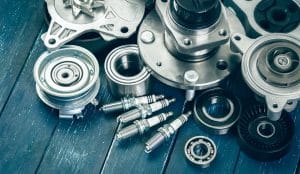
Electroplating is crucial in classic car restoration, boosting aesthetics and protection of certain parts. As a mechanic with decades of experience restoring and repairing classic cars, I’ve seen how electroplating can transform car parts. This quick guide is for DIYers and enthusiasts eager to grasp electroplating’s benefits for car components when you’re working on your classic car restoration projects.
What Electroplating Does for Car Parts
Electroplating involves coating a metal object with a layer of another metal using an electrical current. This process enhances the part’s appearance, increases its resistance to corrosion and rust, and can even improve wear resistance, according to ProPlating. For classic cars, electroplating is often used to restore or replicate the original appearance of parts while providing a protective barrier against environmental factors.
Parts That Benefit from Electroplating
Various automotive components are prime candidates for electroplating, including:
- Chrome Trim and Bumpers: These signature pieces on classic cars gain their iconic shine and durability from chrome plating.
- Engine Parts: Components like carburetors, brackets, and pulleys can be electroplated to resist corrosion and heat.
- Undercarriage Components: Parts exposed to harsh conditions, like suspension systems and exhaust mounts, benefit from electroplating for extra protection.
- Fasteners and Hardware: Bolts, nuts, and screws are often electroplated to prevent rust and enhance their lifespan.
Electroplating’s Role in Rust and Corrosion Protection
Electroplating is effective in guarding against rust and corrosion. The metal coating acts as a sacrificial layer, meaning it takes on the corrosion that would otherwise affect the underlying part. For example, zinc plating, commonly used in automotive applications, provides excellent corrosion resistance, especially when coupled with additional protective layers like sealants or passivation treatments.
Assessing the Quality of Electroplating
Properly done electroplating should result in a smooth, uniform coating without bubbles, pits, or peeling. The thickness of the plating should meet industry standards for the part’s intended use, ensuring durability and protection. High-quality electroplating will have a consistent finish that enhances the part’s aesthetic and functional properties.
Materials Suitable for Electroplating
Electroplating can be applied to various metals, including steel, brass, copper, and aluminum. However, the specific process and preparation methods may differ based on the material’s properties and the desired plating metal. Non-conductive materials, like plastics, require a special process that includes a conductive coating before they can be electroplated.
Where can you find electroplating services?
Do a search in your local area for automotive electroplating or metal finishing services, and some shops will call it chrome plating.
Timeframe for Electroplating
The duration of the electroplating process can vary widely depending on the size and complexity of the part, the type of metal used for plating, and the required thickness of the coating. Smaller parts may be processed in a few hours, while larger components or those requiring multiple plating layers can take longer. It’s essential to factor in preparation and finishing times, including cleaning, polishing, and any necessary post-plating treatments.
Conclusion
Electroplating is a technique in classic car restoration, providing both a clean look and crucial protection for automotive parts. Its ability to resist rust and corrosion, along with the capacity to restore original appearances or provide new finishes, makes it invaluable for enthusiasts and professionals alike. By understanding the intricacies of electroplating, you can ensure your classic car not only shines but is also preserved against the test of time and elements, keeping your cherished vehicle in top condition for years to come.
Stay updated with our activities at Wilson Auto Repair by subscribing to our email newsletter, following us on Instagram (@carmechanic), or arranging a Zoom consultation with Barry Wilson for guidance on your classic car projects. Visit Wilson Auto.com for recommended tools for your classic car endeavors.
